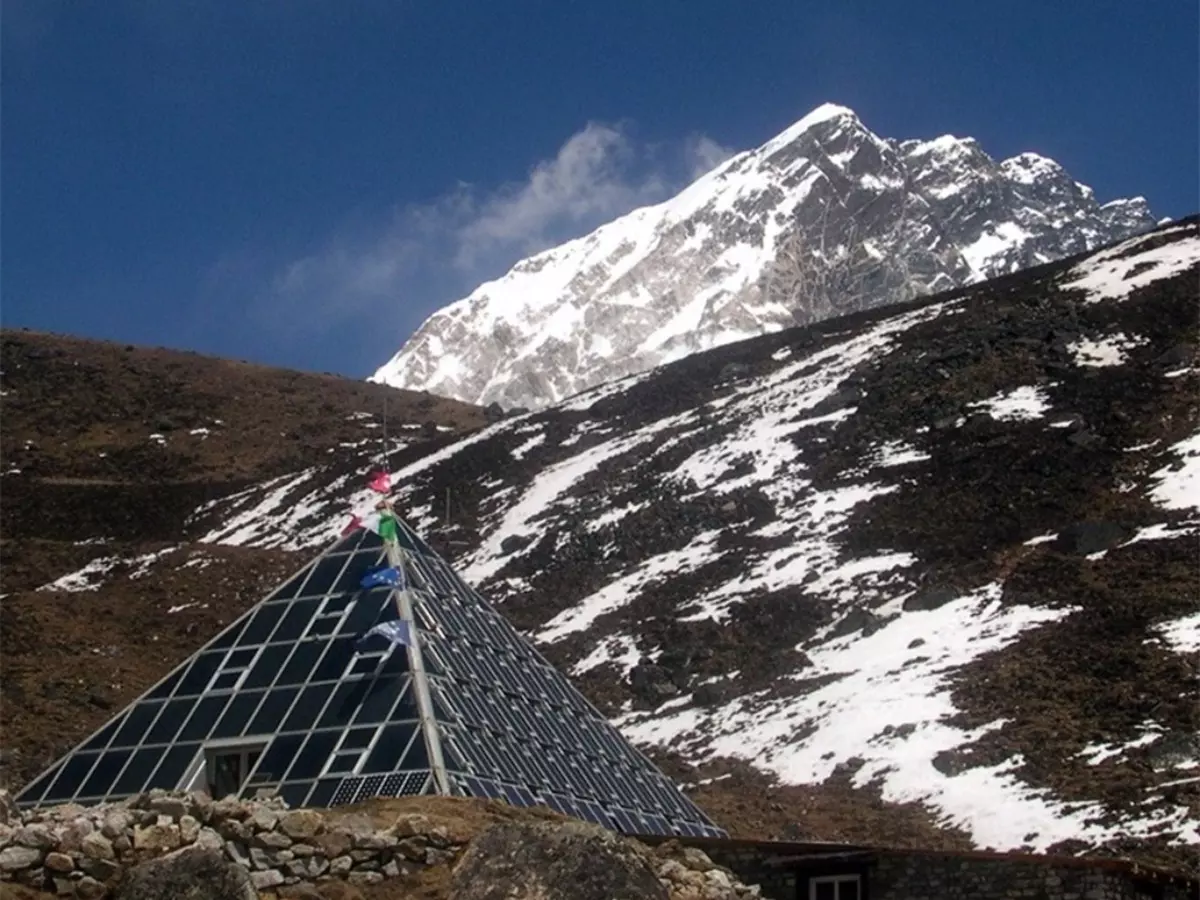Himalayan Glaciers Counter Global Warming By Cooling Air To Preserve Ecosystems
According to an international team of researchers, rising global temperatures have compelled Himalayan glaciers to cool the air in contact with the ice surface

Himalayan glaciers are fighting climate change on their own. According to an international team of researchers, rising global temperatures have compelled Himalayan glaciers to cool the air in contact with the ice surface. These cold wins may be helpful in keeping the glaciers cool and preserving surrounding ecosystems.
 Franco Salerno
Franco Salerno
What did the scientists find?
For long, scientists have documented that mountain tops felt the effects of global warming the most and tended to warm up faster. However, a climate station at the base of Mount Everest in Nepal found that air temperature averages remained suspiciously stable instead of increasing.
The Pyramid International Laboratory/Observatory climate station is located on the southern slopes of Mount Everest and has recorded meteorological data for three decades. Now, a team of researchers led by Institute of Science and Technology Austria (ISTA) and National Research Council of Italy (CNR) have observed something fascinating.
Also read: Billions Face Forced Migration As Climate Change Heats Up The Planet, Study Says
It appears that warming climate is triggering a cooling reaction in the glaciers with cold winds flowing down the slopes. "We found that the overall temperature averages seemed stable for a simple reason. While the minimum temperatures have been steadily on the rise, the surface temperature maxima in summer were consistently dropping," Franco Salerno of CNR said.
 Franco Salerno
Franco Salerno
Why are glaciers responding this way?
Glaciers are responding to climate change by increasing their temperature exchange with the surface. Owing to global warming, an increased temperature difference is noted between the warmer environmental air over the glacier and the air mass in direct contact with the glacier's surface. "This leads to an increase in turbulent heat exchange at the glacier¡¯s surface and stronger cooling of the surface air mass," Pellicciotti of ISTA said.
As a result, cool and dry surface air masses become denser and flow down the slopes into the valleys. This way, lower parts of the glaciers are cooled and so are the surrounding ecosystems.
The team went beyond ground observations available at Pyramid. They used the global climate and weather reanalysis called ERA5-Land that combines model data with observations from across the world into a globally complete dataset.
 Franco Salerno
Franco Salerno
How will this change our understanding?
Researchers found that such winds are happening not on Mount Everest but in the entire Himalayan range. "This phenomenon is the outcome of 30 years of steadily increasing global temperatures. The next step is to find out which key glacier characteristics favor such a reaction," Pellicciotti added.
Eventually, scientists hope to understand which glaciers can react this way to global warming and for how long. Soon, the team will investigate world¡¯s only stable or growing glaciers in the Pamir and Karakoram mountains.
Also read: Giant Solar Shield Tethered To Asteroid Could Slow Down Climate Change On Earth
"The slopes of the Pamir and Karakoram glaciers are generally flatter than in the Himalayas. Thus, we hypothesize that the cold winds might act to cool the glaciers themselves rather than reaching lower down into the surrounding environments. We will be able to tell in the next couple of years," Pellicciotti said.
Results from the findings were published in a study in Nature Geoscience on December 4, 2023.
What do you think about these fascinating findings? Let us know in the comments below. For more in the world of technology and science, keep reading Indiatimes.com and click here for our how-to guides.
